Almost 5,000 new homes are coming to north Palm Desert. Can it handle it?
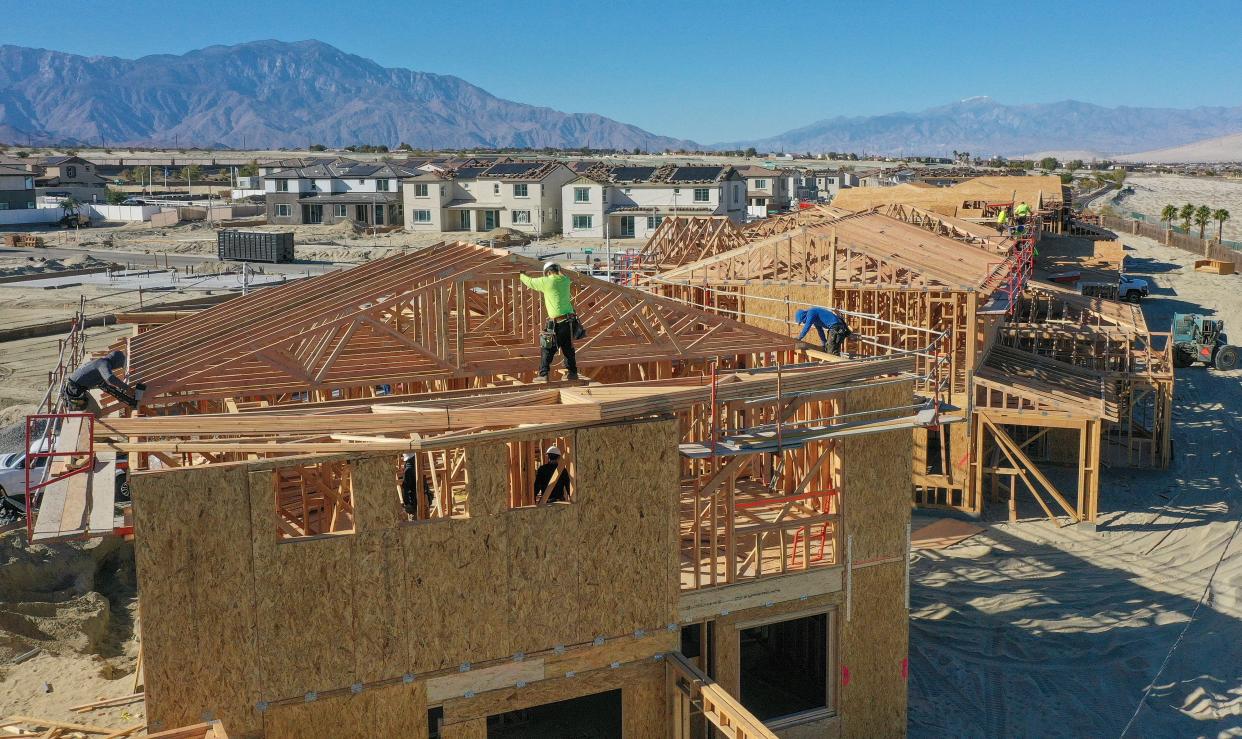
When Carlos Garcia moved to north Palm Desert a few years ago, the surrounding area was largely empty desert.
“There was nothing else around — I mean, absolutely nothing,” Garcia recalled of first buying a lot at Genesis Palm Desert, a gated neighborhood that now includes 166 houses just off Gerald Ford Drive and south of Interstate 10.
Garcia and his husband, Wallace Colvard, decided to move there from Palm Springs in 2018, saying they were drawn by cheaper costs, their neighborhood’s diversity and the potential of the windswept area.
Drive around today, and you’ll see signs promoting new developments at almost every turn, clear indications the area's days as empty desert are at an end. North Palm Desert — broadly speaking, the area north of Frank Sinatra Drive and south of Interstate 10 — already has nearly 1,900 homes, and a massive wave of growth is coming.
Housing is set to more than triple in the area in the coming years, with more than 4,500 units either under construction or approved by the city. Plans for hundreds of additional homes are under review at city hall.
City officials estimate Palm Desert will add approximately 10,000 residents once the wide-ranging plans for new housing are completed. That would bring the city’s population over 60,000, nearly three times what it was as recently as 1990.
Garcia, Colvard and others in north Palm Desert say they look forward to the growth. But they also worry the area is not yet equipped to handle the influx, with concerns including access to public transportation, healthy food, schools, green space and walkable areas.
Stephen Nelson, who heads the Genesis HOA, is similarly excited by the potential of the area, which also includes the city’s Cal State University San Bernardino satellite campus. But he thinks the city needs to do more to prepare for the thousands of residents likely to move in.
“From what I've seen thus far, there's pressures from Sacramento (to build more housing), and (the city) is just like, ‘OK, let's throw it up there,’ with no thought or planning,” Nelson said.
City officials say they've done a lot of planning for growth in the area, but that it's a challenge to balance the timing of new developments and the services and amenities new residents will need.
The sidewalk to nowhere
For Nelson — who helped his mom move to Palm Desert from Los Angeles in 2018 when she retired, then bought his own house nearby — several accessibility issues warrant more attention before the concrete dries on the new developments.
One is public transportation. While SunLine has routes that go through parts of Monterey Avenue and Cook Street, Nelson said the regional transit agency has long discussed plans for a connecting line along Gerald Ford Drive, where hundreds of new homes are being built.
“I've had a little more gray hair since that statement was made, and it's still not there,” Nelson said.
Plans for a new route are not included in SunLine's short-term plan through 2025, but officials are keeping tabs of the growth. William Elwood, the agency's public affairs chief, told The Desert Sun local transit officials developed a comprehensive analysis in 2019 that would create "better connectivity," but said Sunline is about 40 bus drivers short of implementing the approved plan.
"SunLine, as a community partner, will continue to monitor the growth and developments in the Coachella Valley and develop innovative ways to improve transit services," Elwood said.
Some also think the area isn’t easily walkable. At a council meeting last fall, Nelson described what locals call the “sidewalk to nowhere” near the corner of Gerald Ford Drive and Portola Road, where a southbound path ends abruptly without connecting to the busy intersection’s crosswalks.
“Our residents typically walk a lot during this time of the year, and they're having to go out into oncoming traffic, because the developer did not continue the sidewalk around (the corner) to Portola,” Nelson told the council.
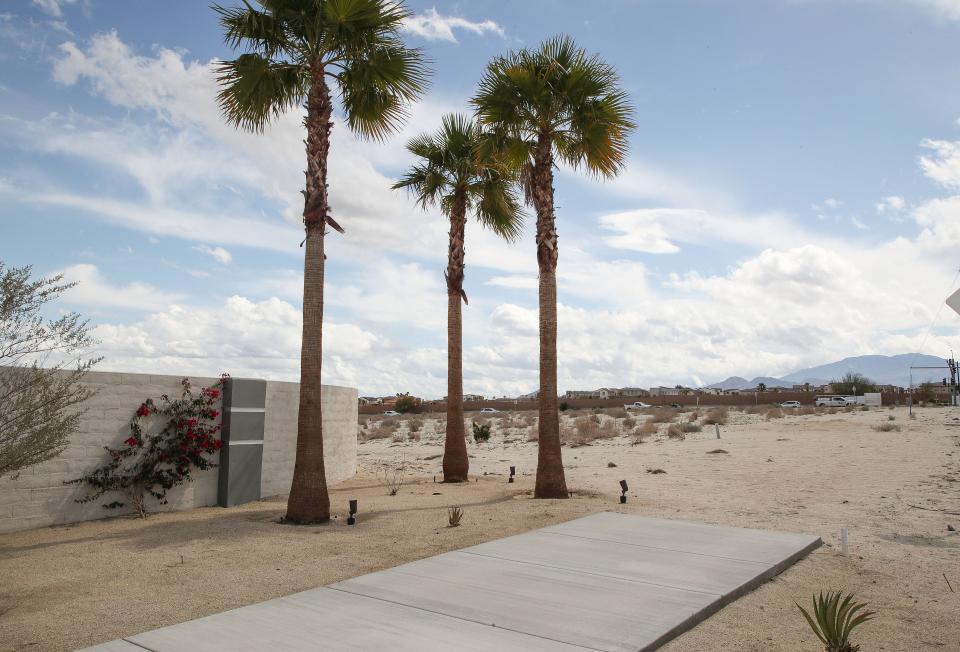
For those on foot, the area’s access to grocery stores is also a concern. The closest option is a Walmart along Monterey Avenue, a route that Garcia says is “far from walkable” for most residents.
Data from the U.S. Department of Agriculture underscores the issue for people lacking cars: At least a third of area residents near I-10 live farther than a mile from the nearest grocery store or supermarket, according to the USDA’s Food Access Research Atlas. (The area, however, does not meet the definition of a “food desert,” due to its smaller share of low-income residents.)
Nelson also raises his nephews and sends them to local public schools, but with a catch: Despite living in Palm Desert, kids in the area are zoned to attend schools in the Palm Springs Unified School District. Nelson’s nephews, for example, were zoned for elementary school in Rancho Mirage, about a 15-minute drive away, and if they need to take the bus, students must get to their bus stop more than an hour before school gets underway.
“It's really not a workable solution if you have children,” Nelson said.
City faces chicken-and-egg problem
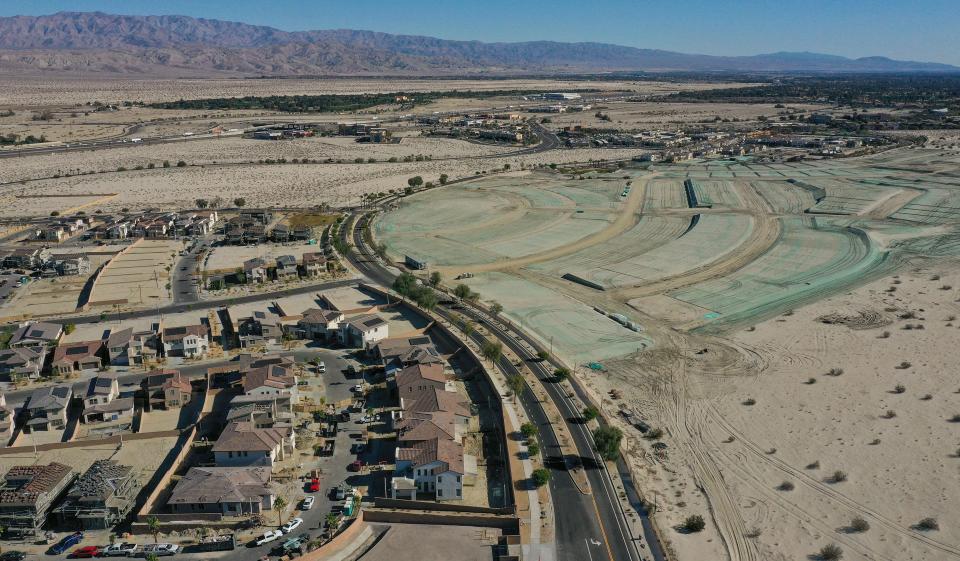
Despite the criticism, Palm Desert city officials say they have been planning for the area’s growth for many years. In an interview, Eric Ceja, the city’s economic development director, noted an assessment district — in which area residents agree to pay an extra amount for specific improvements — formed in the early 2000s that “really helped facilitate a lot of this development.”
Mayor Pro Tem Karina Quintanilla told The Desert Sun the city has been “very deliberate” with its long-term plans for the area, comparing their development to having a baby.
“You have all of these goals,” Quintanilla said. “You want to set the plan, and you know it's going to evolve at its own pace.”
Pointing to public transportation and schools as an example, Quintanilla described a “chicken and egg” situation, in which officials assess an area’s needs based on current population statistics.
“If you build it, they will come,” Quintanilla said. “We will have some increases in housing before everything is slated for everyone to move in, so it's gradual. The baby has to learn to walk.”
City officials have also been lobbying for Palm Desert to get the mid-valley station for a potential train connecting the Coachella Valley to Los Angeles, with long-term plans for the daily route gaining steam. Quintanilla noted the area’s proximity to the new Acrisure Arena — just across the interstate — and the CSUSB campus as selling points.
“We're not only looking ahead to the progress of our city, but to the valley,” she said. “We are centrally located, the home of higher education, and we work towards things that benefit everyone.”
More: Train between the Coachella Valley and Los Angeles could happen in the next decade
Accessibility is particularly crucial given the city’s hopes to turn their local campus into a standalone university, or “Cal State Palm Desert,” in the not-too-distant future. Enrollment at CSUSB Palm Desert has more than doubled in the last 15 years, with funds recently approved to build a new student center there.
‘Complete neighborhoods’
Palm Desert’s comprehensive general plan, adopted in 2016, sets a goal for the city to develop “a University-oriented neighborhood” north of Frank Sinatra Drive, with specific requirements that the neighborhood “be walkable, highly connected to the surrounding areas, and exemplify the best ideals of Palm Desert and complete neighborhoods."
That neighborhood is in the works: Roughly 1,100 homes, a mix of houses and apartments, are slated for development just northeast of Portola Avenue and Frank Sinatra Drive. Ceja noted the community will be ungated, with plans for several green spaces.
“That development, in particular, really starts to fill in that missing infrastructure to make that area walkable, because as more development comes in, sort of the sidewalks, the parks, the amenities that those residents are going to need, the University Park is a great example of that,” Ceja said.
“The other vacant land remaining for development will also be an example (and) mimic a lot of what the University Park is in terms of varied housing types, and then more public infrastructure to come into that area,” he added.
More: Elected officials present $79 million check to CSUSB Palm Desert for new building
There’s still a lot of construction to be done at the 167-acre property, which was bought by financial giant BlackRock in 2018. City officials did not have an estimate of when the neighborhood will be ready for its first residents.
With a statewide survey last month showing nearly half of Californians are worried about having enough money to pay their rent or mortgage, Quintanilla was hopeful the mix of new options will help people who have been priced out elsewhere, or who don’t qualify as low-income.
“We have folks that have dual incomes or teachers or professionals, that even with a professional career, don't have a salary that is kept up with the cost of living and with the inflation costs,” Quintanilla said.
“Having an increase in housing means that we'll have an increase of apartments available for growing families and for students becoming independent and for future Cal State Palm Desert students,” she added.
While Palm Desert already has roughly 1,100 affordable housing units city-wide, another factor driving the growth is the city’s state-mandated affordable housing plan, known as a Housing Element, that runs through 2029.
The city’s latest plan, which has gained approval from state officials, says Palm Desert needs 1,135 new housing units for people with lower-tier incomes. While Housing Elements require local governments to produce lengthy reports of their plans, the state-mandated process does little to hold them accountable for subsequent construction.
City eyes new fire station, regional park
Some recent steps taken by the city have gotten nods of approval from residents, including the council’s decision to install six-foot wind fences along stretches of roads in the area to combat sandstorms. The blowing sand created headaches: Nelson said his elderly mother was unable to even leave their community during recent storms, due to the sand dunes built up along the sidewalks and roads just outside.
While Garcia said it wasn’t until residents made “a lot of noise," the Palm Desert City Council approved roughly $342,000 from its reserves last year to address the issue.
Before its unanimous vote, the council briefly debated the city’s role in bolstering privately owned areas that weren’t prioritized by developers. Speaking in favor of the installations, Councilmember Gina Nestande noted the “North Sphere,” as the city calls it, is the last area for homebuilding in the city amid a regional housing shortage.
“The city has encouraged home development there, and so we do have a responsibility, I believe, to our neighbors that have homes in the North Sphere to make it a livable and safe area,” Nestande said. “Otherwise, as the city, are we saying we don't want to build any more homes over here, and just to have ‘buyer beware’? I think the city is on the right path.”
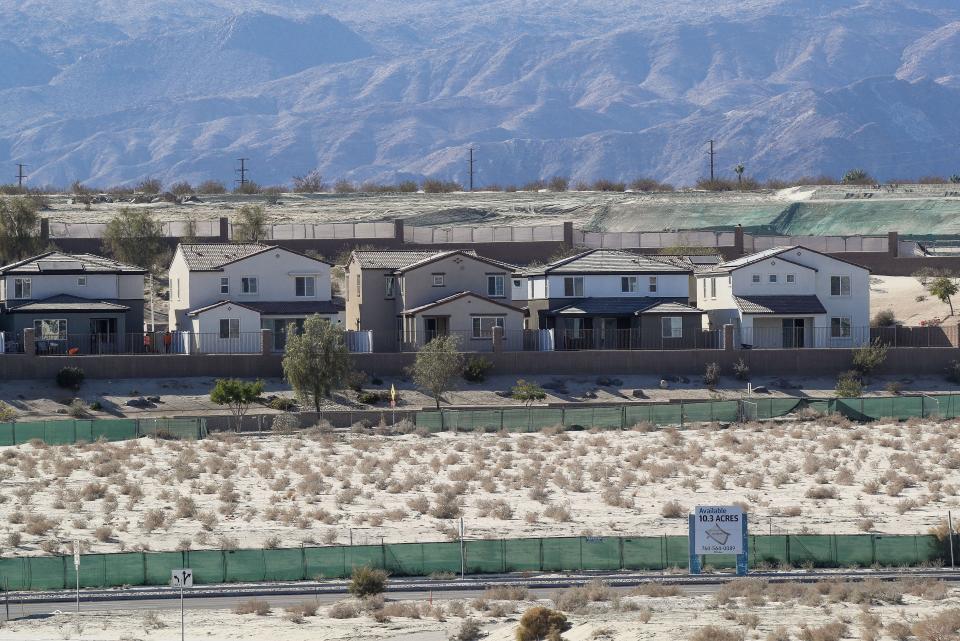
At the same meeting last year, the council also agreed to a $1.23 million contract to start designs on a regional park in north Palm Desert — potentially on a 27-acre parcel next to the Genesis community, or a slightly larger lot along Frank Sinatra Drive.
A few residents said they would prefer a passive park at the smaller lot, rather than one with large sports facilities. Specific plans for the parks are still in the works, according to city officials.
In another step preparing for more growth in north Palm Desert, the council approved a $674,000 design contract for a new fire station on city-owned land along Gerald Ford Drive in January. Construction of the fire station is expected to be completed in late 2025.
Despite those efforts to add more nearby services, Garcia — who lost a bid for a city council seat last year — thinks the council sometimes lacks a good sense of the area, noting all five members live south of the Whitewater Wash, about a 10-minute drive away from the “North Sphere.”
“The point is (when) you don't have anybody who lives in an area, they don't see things… You don’t see how things change,” Garcia said.
The city, which currently has a unique two-district setup for its council, has weighed moving to a five-district system that would guarantee a representative from the city's northern end. In a ballot question last year, about 53% of residents said they supported such a move, and the council recently formed a subcommittee to consider next steps.
Quintanilla, who helped lead the initial push for a district system as a citizen, is one of the subcommittee’s members, and said she’s “happy with the fact that we're having discussions, where we had not been able to even reach that point before.” She declined to comment directly on the discussions, but said to “stay tuned.”
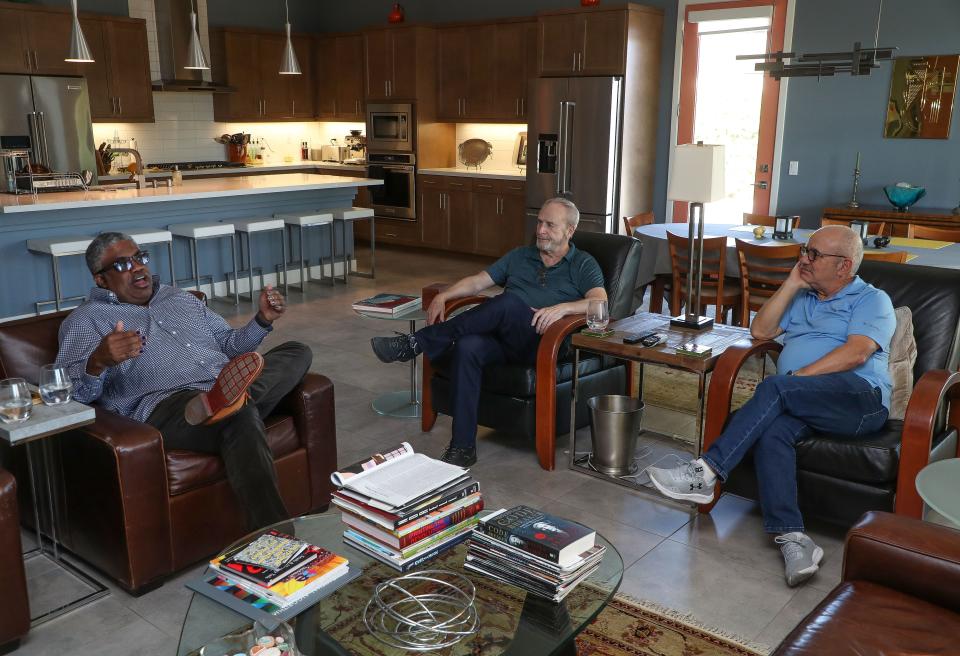
Regardless of how that goes, some see change as inevitable for north Palm Desert. Colvard, Garcia’s husband, said he hopes the city — which celebrates its 50th anniversary this year — can maintain its “looser,” relaxed vibe as it welcomes a new wave of residents in the area.
“I'm proud to live in Palm Desert, and I think it's a cool place to live,” Colvard said. “It's in the process of defining or redefining itself… The population is changing tremendously – and fast.”
Tom Coulter covers the cities of Palm Desert, La Quinta, Rancho Mirage and Indian Wells. Reach him at thomas.coulter@desertsun.com.
This article originally appeared on Palm Springs Desert Sun: 5,000 new homes could come to north Palm Desert, posing challenges

